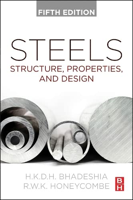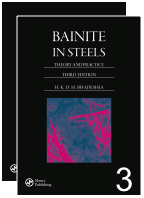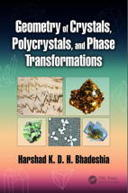

This article is a short review of new developments in the technology and design of rail steels. A comprehensive review is listed below.
Encyclopedia of Materials Science: Science and Technology, eds K. Buschow, R. W. Cahn, M. C. Flemings, B. Iischner, E. J. Kramer and S. Mahajan, Pergamon Press, Elsevier Science, ISBN 0-08-0431526, 2002, pp. 1-7.
Single copies may be downloaded and printed only for the reader's personal research and study.
The article is reproduced with the permission of Pergamon Press, an imprint of Elsevier Science.

Ph.D. thesis, by Cathering Erica Pitt, University of Cambridge, 1999
 |
Ph.D. thesis, University of Cambridge, by Liou Chun Chang, 1995

|
Ph.D. thesis, University of Leicester, by John Ernst Garnham, 1995

|
The following image has been provided by Kevin Sawley, who ran trials of an experimental bainitic rail steel on heavy-haul track in the USA. The steel was had the chemical composition Fe-0.26C-2Mn-1.8Si-1.9Cr-Mo-B. It had an as-rolled hardness of about 415 Brinell and toughness of about 50 MPa m1/2. The spectacular picture that shows conventional head-hardened pearlitic rail flash-welded to the carbide-free bainitic rail following a trial in which 90 million gross tons of traffic traversed in a sharp curve. The superiority of the carbide-free bainitic rail is fairly clear.
The work was done at Transportation Technology Center, Inc.
 Published 2025 |
 Published 2024 preview, video |
 Free download |
 Free download |
| PT Group Home | Materials Algorithms |

|

|